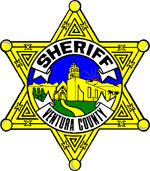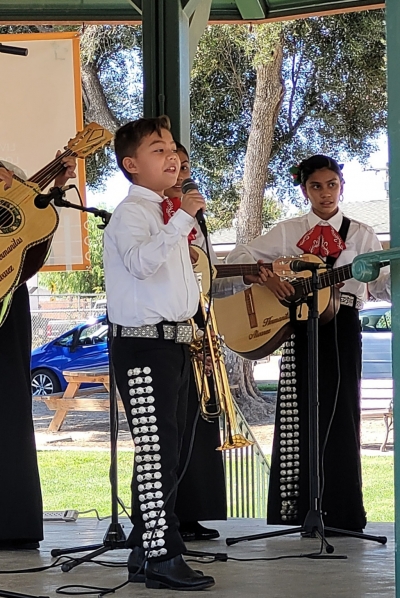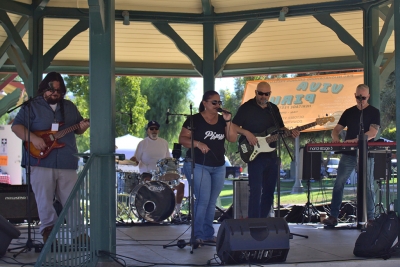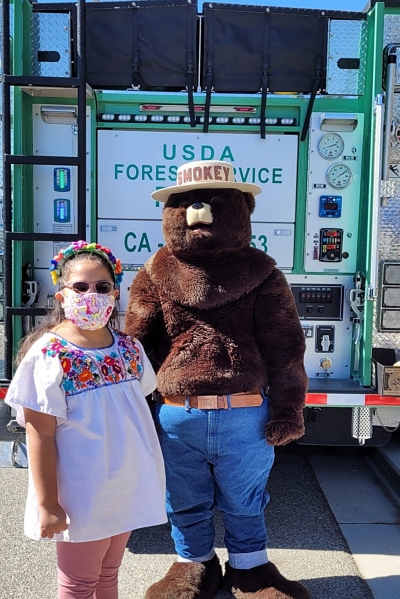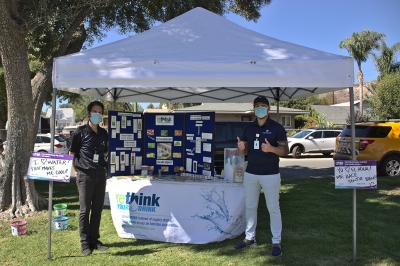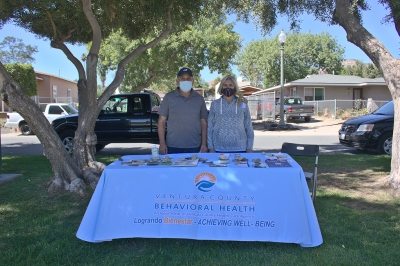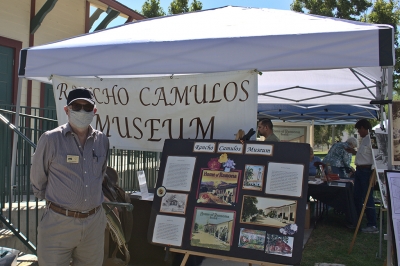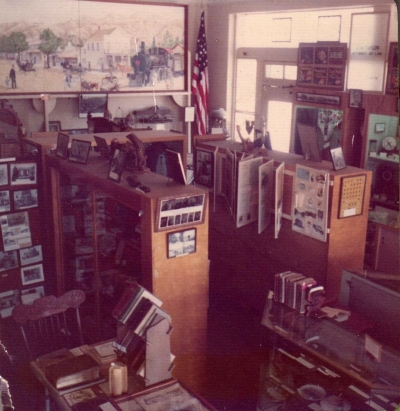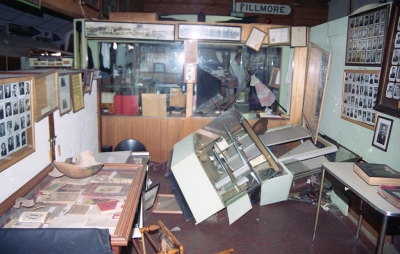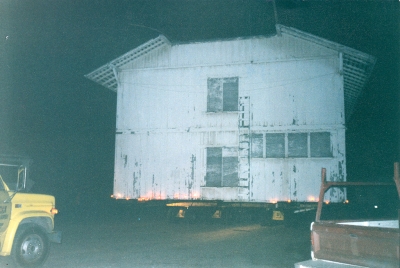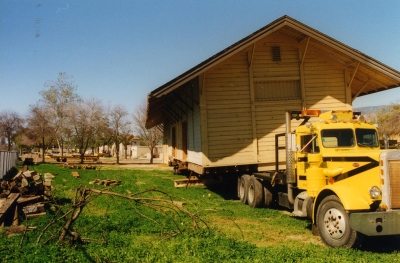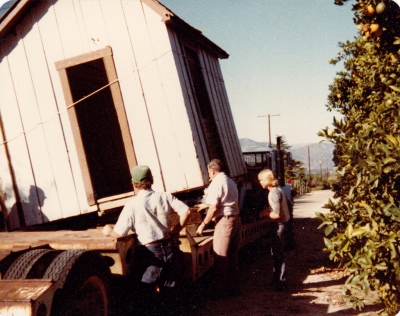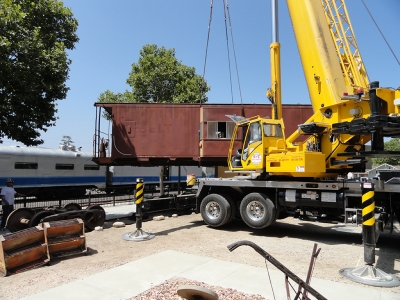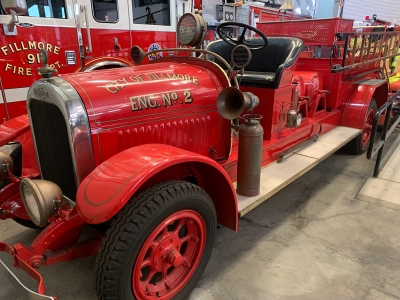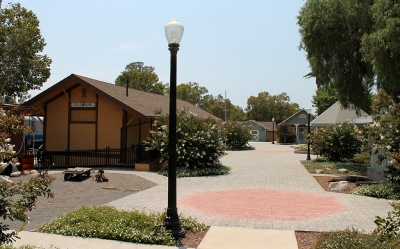|
By Gazette Staff Writers — Wednesday, October 27th, 2021
 There was only one item on the Fillmore City Council special meeting agenda this week, and that was the Council interview and selection of a new council member to be appointed to fill the vacancy left by the recent passing of Ari Larson on September 17th. By a unanimous vote of the Council, Simone Alex was appointed to fill the open position. The meeting was adjourned by Mayor Mark Austin shortly after 9:00 p.m. and no biographical information on Ms. Alex was available before press time. A photo and more information will be provided in next week’s edition. Enlarge Photo |
|
By Ventura County Sheriff Department — Wednesday, October 27th, 2021
On Monday, October 18th, between 2:45 p.m. and 3:00 p.m., a 10-year-old female was walking home from school on Central Avenue at Second Street in Fillmore when an unknown male attempted to contact the female to approach his van. The van was described as an older white full-size van with no windows and stock rims. The man was described as being a light skinned male with brown eyes, long black hair, with an earring in his right ear and wearing a long sleeve black shirt or sweater with holes on the end of the sleeves. The Fillmore Investigations Bureau has been actively investigating this incident in cooperation with the Fillmore Unified School District since it was reported late Wednesday afternoon. The police encourage residents to immediately report suspicious people and vehicles, and to promptly report any crime they come across by calling 911. Nature of Incident: Possible Child Annoying / Suspicious Vehicle |
|
By Gazette Staff Writers — Wednesday, October 27th, 2021
On Thursday, November 11th, in honor of Veterans Day, Fillmore will celebrate with the traditional Veteran’s Day breakfast at the Fillmore Piru Veterans Memorial Building. Also, be sure and join Veterans Day Parade at 10a.m. on Central Avenue, with a ceremony to follow at Fillmore City Hall. On Saturday, November 13th from 10am to 5pm, a Veterans Day car show will be held on Central Avenue, hosted by the Sespe Creek Car Club. These events are sponsored by City of Fillmore, Fillmore Lions Club, Fillmore Rotary Club, Fillmore VFW, Piru Neighborhood Council, Knights of Columbus, Soroptimist Club, Villegas Public Affairs, Union Bank and Sespe Creek Car Club. |
 On October 9th, volunteers gathered for the Viva Piru event in the Piru Town Center. Hosted by the Piru Neighborhood Council, the event was a big success. There was live music, dancing performances, fire safety information booths with Sheriff Search and Rescue, Smokey the Bear, as well as booths for Fillmore History Museum, Ranch Camulos, games and more. Enlarge Photo By Gazette Staff Writers — Wednesday, October 27th, 2021
Submitted by Ken Wiseman, President of the Piru Neighborhood Council, PNC The day started like many others at the Town Center Park. Joggers shuffledby, nosy dogs escorting their owners explored the pathways, and a few folks were already relaxing or waiting for rides at benches and the bus stop. The morning of October 9, volunteers started arriving, tables unfolding, chairs snapping, easy ups springing together. Unhurried, catching up with each other on many fronts, the volunteers seemed excited for this day that would unfurl before them. Sound checks pierced the morning quiet teasing all with what's to come, as did the welcoming sounds of, "Hey what can I do?" "Where does this go?""Where do I set up?" "Wow, this looks cool!" Then they began arriving! An older couple hand in hand from the east.A mom and dad pushing a stroller, with two other youth leading the way, arrived in from the west. The Mariachi Lluvia y Fuego band, from perhaps as young as five all the way up to the proud parents, began arriving from the south. People staked out their view with chairs, and blankets. People found one another and there were hugs, sports banter, ‘go dodgers’, renewed acquaintances.Fellowship, Exploration, Relaxation, Entertainment. Clearly a day to take in the simple things, the quaintness of the town, the shyness of some of the town’s new arrivals, and the open enthusiasm of others.And also the hesitancy of some to embrace the growing community as several agriculture fields, less than a mile away, have been tilled, and the growing of more homes has begun. Others are excited that our growing population will bring more diversity, more commerce, more investment in the community, and they welcome the growth. But alas, VIVA Piru music wafting far beyond edges of the park reaches out to passersby, and to residents as far as a mile away, inviting them to join us.Fire trucks and our amazing first responders arrive, Sheriff Search and Rescue set up and explain their Rescue equipment, Smokey the Bear makes a surprise visit!We learn about fire safety, and kids and adults alike see and talk to our community heroes. Also present was a First Aid station led by C King (past PNC President) and an associate, sponsored by her company, Emergent Medical Solutions. Volunteers from the Rancho Camulos Museum hosted the Piru Heritage Booth.They shared a large amount of information and researched materials about local history. Artifacts displayed included a saddle made by Juan Fustero, “The last Piru Indian,” that was on loan from the Fillmore Historical Museum. Visitors were encouraged to share their own family stories and memorabilia. There was a wealth of history spread out on many tables. Many leafed through photo books, and learned about who we were, and what has changed over the years. Ventura County provided outreach to our local community by securing two mobile trucks explaining the importance of proper nutrition, and behavioral health services. A library truck with enthusiastic attendees prompted people to learn about the library services. Free books were offered to curious visitors.At the coloring tables, youth sat at tables and scribbled in and out of the lines as they expressed what VIVA PIRU meant to them. Attending volunteers Lupe and Lisa orchestrated the fun. The Fillmore Luv 2 Dance Studio garnered a flurry of cell phone camera activity as youth in colorful outfits danced in front of the Gazebo while background music escorted them on the journey they provided for us. Area restaurants, Brenda's Cas Amia and Las Delicias, served up wonderful food for the occasion, with a few food trucks making an afternoon appearance. The 4-H club had a setup with several eager members in presence, with bean bag competition and other challenges and information. A corn hole tournament tested a number of competitors with a 50-50 winnings split. The Boys and Girls Club, partnered with the PNC on an art contest about Piru. Thirty-six entries were submitted, and they were all so great that a pizza party for all was awarded as the prize. The local Piru Neighborhood Council, PNC, the host of the inaugural event, also had a tent where loads of information could be found along with VIVA PIRU hats (given out with a donation), drinks, and a 50-50 raffle along with a chance at four tickets to Magic Mountain! Manning the PNC table at varying times were Lisa Crockatt, former VP, Ken Wiseman, President, Judy Daley-Lovett, Treasurer, and interim Secretary, Patty Guertler. The afternoon brought in the bands! People rocked the afternoon to the music of the Piru River Band, Juano and Friends, and DJ Dan Ybarra. Whether the music was a welcomed backdrop to your walk through the park, captivating your attention from a chair facing the band, or the vibes that took your hand and drew you to dance with others in front of the bands, the music touched all. Manny Mendoza, PNC board member, event chair, MC and band member was perched throughout the event in the gazebo keeping both the tempo and schedule of activities, along with lots of thank you’s to all in attendance. Our commitment this year was to keep the event small and determine the future from the feedback we received. Overall, we know that this will be an event that will remain a part of the fiber of our community. The last song played. Then special thanks to all mentioned above, and all those that volunteered to help in this event. One more song for good measure, to further ingest the joy of the event. People lingered and talked until dusk brought the folding of tables and chairs. Easy ups were easy downs, trucks and cars were loaded, and soon, outside some reminiscing about the great day, the Piru Town center Park returned to its pristine state. Walking people, joggers, baby strollers, and the like. |
|
By Gazette Staff Writers — Wednesday, October 27th, 2021
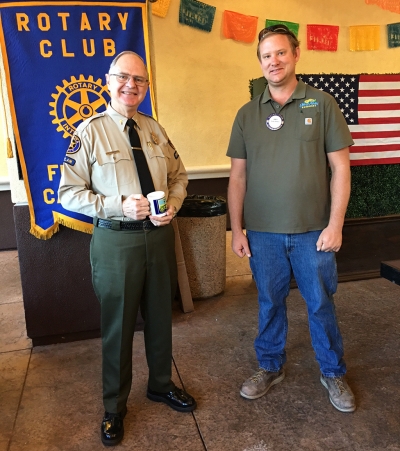 (l-r) Ventura County Sheriff’s Chaplain Randy Tucker and Rotary Club President Andy Klittich. Tucker was the guest speaker at the Rotary Club meeting. Photo courtesy Rotarian Martha Richardson. Enlarge Photo The guest speaker at Fillmore Rotary Club was Randy Tucker, a Chaplain with the Ventura County Sheriff’s Office. In 1998 Ventura County started a chaplain program. The individuals involved are licensed or ordained clergy. They are available to people who need hope and comfort after a bad situation. They could be survivors or officers who need someone to talk to. They may go to hospitals or funerals wherever they are needed. Randy said he likes to go to the Sheriff’s briefings so he knows what’s happening and he likes to go on ride-alongs so he will know the officers and build their trust. The chaplains are trained to handle stress and other issues and are on call 24/7. There are five chaplains in Ventura County. He said it is important to pray for all officers and other first responders every day. |
|
By Gazette Staff Writers — Wednesday, October 27th, 2021
The Ventura County Public Health Officer has extended the indoor mask order, requiring all individuals, regardless of vaccination status, to wear face coverings when indoors in public settings, with limited exceptions. “The order is necessary to reduce the rate of community spread and to reinforce the need for safe interactions. We will continue to monitor transmission rates, hospitalizations, deaths and vaccination rates throughout the County,” said Public Health Officer Doctor Robert Levin. The order will continue to be in effect until: (2) COVID-19 hospitalizations in the County are low and stable, in the judgment of the Health Officer; and (3) eight weeks have passed since a COVID-19 vaccine has been authorized for emergency use by federal and state authorities for 5 to 11-year-olds or 80% of the County’s eligible population is fully vaccinated with two doses of Pfizer or Moderna or one dose of Johnson & Johnson (booster doses not considered); Or until the Order is extended, rescinded, superseded or amended in writing by the Health Officer. The order directs that face coverings must be worn over the mouth and nose – regardless of vaccination status – in all indoor public settings, venues, gatherings, and workplaces, including but not limited to offices, retail stores, restaurants and bars, theaters, family entertainment centers, conference and event centers, and government offices serving the public. Performers at indoor live events such as theater, opera, symphony, and professional sports and persons speaking before a live audience may remove face coverings while actively performing or participating, though such individuals should practice physical distancing as much as practicable. Further amendment and clarification to the Order may be set forth in the County of Ventura’s FAQs. Due to the quickly evolving nature of local health conditions and State orders, the Health Officer has determined that the public would be best served by utilizing FAQ’s that can be easily accessed by members of the public and quickly updated by the Health Officer as circumstances warrant. Therefore, all FAQs on the County of Ventura website at www.vcrecovers.org shall be deemed a directive of the Health Officer. |
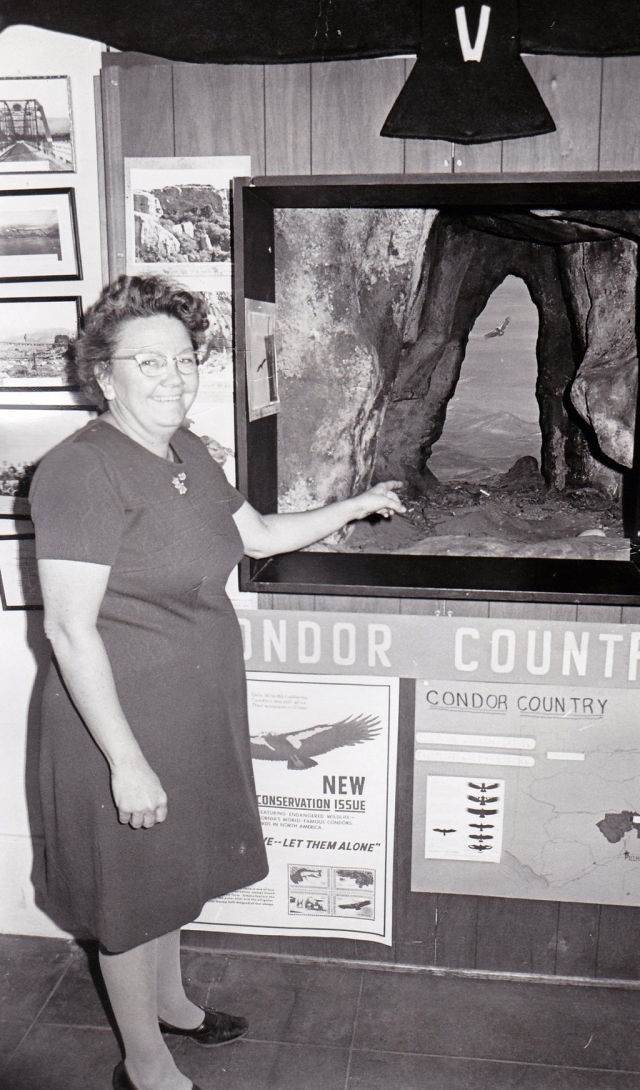 Dorothy Haase, Fillmore Historical Museum cofounder, who was in charge until 1996. Photos courtesy Fillmore Historical Museum. Enlarge Photo By Gazette Staff Writers — Wednesday, October 27th, 2021
Courtesy Fillmore Historical museum The museum has been in Fillmore for decades but how did it get started? In 1970 the Fillmore Chamber of Commerce under the direction of its president, Joe Kern, decided that Fillmore needed a museum. There had been a small historical display in the 1940s located in the Fillmore City Hall. City Manager Clarence Arrasmith was custodian of this small collection of artifacts donated in 1928 by longtime resident, Dr. Alexander McGregor. A real museum would be tourist draw and a source of pride for the community. The Chamber Board asked local author, historian and Spanish teacher, Edith Jarrett, to spearhead the project and become the founding curator. In addition the Chamber donated $1000 to get the project rolling. Edith along with Dorothy Haase who was Chamber secretary began the process by finding a rental space for the future museum. The first location would be the ground floor space in the Masonic Temple Building on the corner of Central and Sespe Streets. Over the years this space had been a general merchandise store and a grocery store. It would soon become the Fillmore Historical Museum and would share space with the Chamber of Commerce. But how do you start a museum from scratch? The first item on the agenda was making a list of about 100 families who had been in Fillmore as early as 1900. Dorothy and Edith drafted a letter which was sent to these families and to local clubs and civic groups explaining the new project and its need for financial help as well as historic artifacts. Then the wait for a response began. The response was incredible. They received hundreds of photos, old oil field and farming tools, kitchen items, paintings and much much more including financial donations. In order to organize and display all these donated items they needed showcases and an identification system. Local families and organizations sent financial donations large and small to cover the cost of the cases. In return a plaque was put on the cases honoring the donor. Carpentry was done by Fred Barger. Earl Ball designed and built the original cases. As time went by and more cases were needed. Some came from local stores who were replacing them with newer ones or they were purchased. Many of the showcases in use today were donated to the Fillmore Museum by the Museum of Ventura County when they replaced them with newer ones. Identification was a simple numbering system with a three digit family number followed by an item number attached to each artifact. The official opening day was during the May Festival in 1972. Within a short time the Museum was receiving visitors by the busload from Los Angeles, students from our local elementary and high schools and numerous clubs and even college students doing research. In 1973 Edith was getting suggestions from the locals that the Museum should acquire the Southern Pacific depot which was going to be torn down by the railroad. At the same time the little space in the Masonic building was to be made even smaller by the installation of an elevator. She took a close look at the depot and found it to be in generally good shape except that there was no wall covering, no ceiling and a splintery floor. It looked every bit its age as it had been built in 1887. It would also need new electrical wiring, plumbing, new paint and, possibly, a new roof. Edith proposed to the city that she would cover the cost of moving, repairs and refinishing if the City would provide a location. Unfortunately, when Edith presented the idea to the city council there was a catch. They had to approve the proposal that night, December 11, 1973, as the Southern Pacific required that the depot must be off the railroad right of way by Dec 31 or it would be demolished. We will be forever grateful that the Fillmore City Council under the leadership of Mayor Ernie Morales unanimously approved the plan that night. The Fillmore Depot was moved to city property on Main St. just across the alley from the old fire station and restored. In 1975, a 1956 boxcar was added to the site for additional display space. Edith served as curator until 1979 succeeded by Dorothy Haase who was in charge until about 1996. The Northridge earthquake of 1994 set the Museum on a new path. The depot was knocked askew off its foundation and the Museum was closed for about four years. During that time the city once again favored the Museum with permission to move to city owned property next to the track on Main St. between Saratoga and Clay. During that 4 years the Museum office was first in a caboose next to the site and then in 1996 the office opened in the 1905 Hinckley House. The house had been badly damaged in the earthquake, donated to the museum by the Corl family, and moved to the new site and restored. The 1919 Bunkhouse building, a donation by James P. Finch, was moved from Rancho Sespe to the site and restored in 1998-1999. Finally the depot which had been moved in 1994 to the site was put on a foundation and restored. The entire project was finished and move in was complete by 2008. Also added to the site was the Bardsdale post office which had for years sat on the depot dock when the depot was across the site next to the alley. In the last 15 years a 1968 caboose has been added, pavers and landscaping installed in the center of the site, and the well-traveled gazebo put in place. The gazebo had graced the city park west of the museum site, then moved to the vacant space where the Masonic Temple had been located and finally moved to the Museum site. A garage was built next to the Hinckley House to protect and display a 1920 Model A pickup which was restored by Lyn Thomas and his high school auto shop class and taken on the History Channel’s Great Race in 1999. The newest addition to the site will be a display building to house the 1927 American La France fire engine which was used here in Fillmore between 1928 and the early 1950s and donated by a group of former Fillmore firemen who faithfully restored it. Throughout Covid 19 closedowns and reopening the Fillmore Historical Museum docents have been at work. New displays have been designed and put in place. We are also looking forward to celebrating the 50th anniversary of the museum next year. We are grateful to the community for its support and we hope that you will take the time to visit the Museum. We also hope that if you are a lover of antique vehicles, especially fire trucks, you will support the Museum with a donation for the specific purpose of building the firehouse. |
|
By Ventura County Sheriff Department — Wednesday, October 20th, 2021
A 34-year-old Fillmore man was arrested after being identified as an arson suspect. On October 10th, at approximately 11:30 a.m., Fillmore patrol deputies responded to Fillmore High School to assist Fillmore Fire Department with an arson investigation. Their investigation determined someone had attempted to throw a bag that was on fire into an open window of the school. Due to the suspicious nature of the fire, investigators from the Fillmore Police Department and Fillmore Fire Department responded to the location. Investigators reviewed nearby video surveillance and were able to identify the suspect as Eric Manzano. On October 15th, investigators located Manzano at his Fillmore residence and arrested him for the arson. Manzano was transported and booked into the Ventura County Pre-Trial Detention Facility for one felony count of arson and for a California Department of Corrections (CDC) parole hold. Manzano remains in custody with his bail set at $60,000. His court date is set on October 18th. Manzano has a prior conviction for arson and is on CDC parole for arson. Fillmore Police Department is actively investigating several other suspicious fires that occurred between September 9th and October 2nd in the city of Fillmore, town of Piru and unincorporated areas of Santa Paula. The Fillmore Police Department encourages citizens to immediately report suspicious people and vehicles, and to promptly report any crime they come across by calling 911. Nature of Incident: Arson Suspect Arrested Ventura County Crime Stoppers will pay up to $1,000 reward for information, which leads to the arrest and criminal complaint against the person(s) responsible for this crime. The caller may remain anonymous. The call is not recorded. Call Crime Stoppers at 800-222-TIPS (8477). |
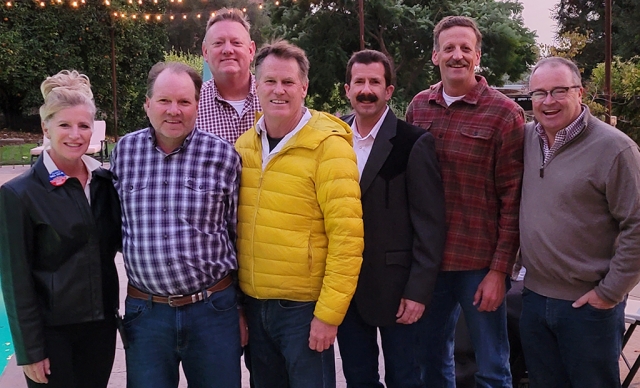 (l-r) Undersheriff Monica McGrath, Scott Beylik, Mike Richardson, Tim Hagel, Ventura County Sheriff Bill Ayub, Eric Tennessen, and Bill Morris. Enlarge Photo By Gazette Staff Writers — Wednesday, October 20th, 2021
An enthusiastic get-together to promote the reelection of Ventura County Sheriff Bill Ayub took place recently at the Mike Richardson ranch in Fillmore. Among approximately 60 honored guests were Undersheriff Monica McGrath, Tim Hagel, Thousand Oaks Chief of Police, ret., Scott Beylik, Bill Morris and Avery Stewart. McGrath reminded the group of the Sheriff's outstanding leadership during one of the largest wild fires on record, and his adroit handling of the November 7, 2018, mass shooting at the Thousand Oaks Borderline Bar and Grill. Both calamities occurred simultaneously in the very first days of his election to the position of Ventura County Sheriff. He received high praise for the effective control he demonstrated at that time. Sheriff Ayub spoke of holding crime rates at historic lows during his tenure as Sheriff during several challenging times. Sheriff Ayub notes: "During my first term, we have held crime rates at historic lows in Ventura County while they have risen elsewhere. I achieved this by seeking out innovative strategies, employing well-trained and well-equipped staff, and fostering strong and supportive relationships with the community." He is also "not accepting endorsements or donations from active duty full-time Ventura County Sheriff’s Office employees." |
|
By Gazette Staff Writers — Wednesday, October 20th, 2021
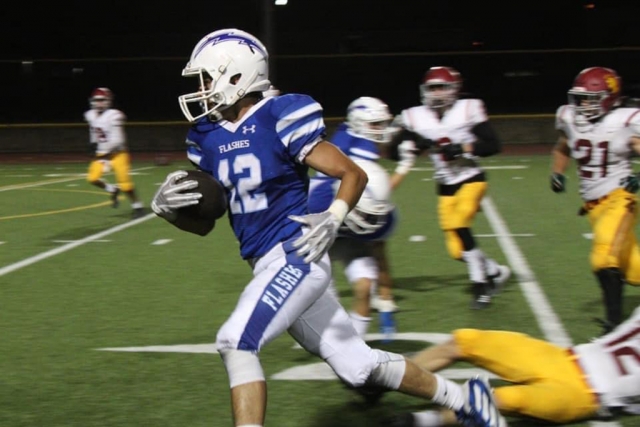 This Friday, October 21st, the Fillmore Flashes take on long-time rival Santa Paula for their 110th meeting. Tickets for Friday’s rivalry game are SOLD OUT. However, you can still watch the game live on Friday at the VC Star website. The rivalry is their game of the week. Enlarge Photo |


